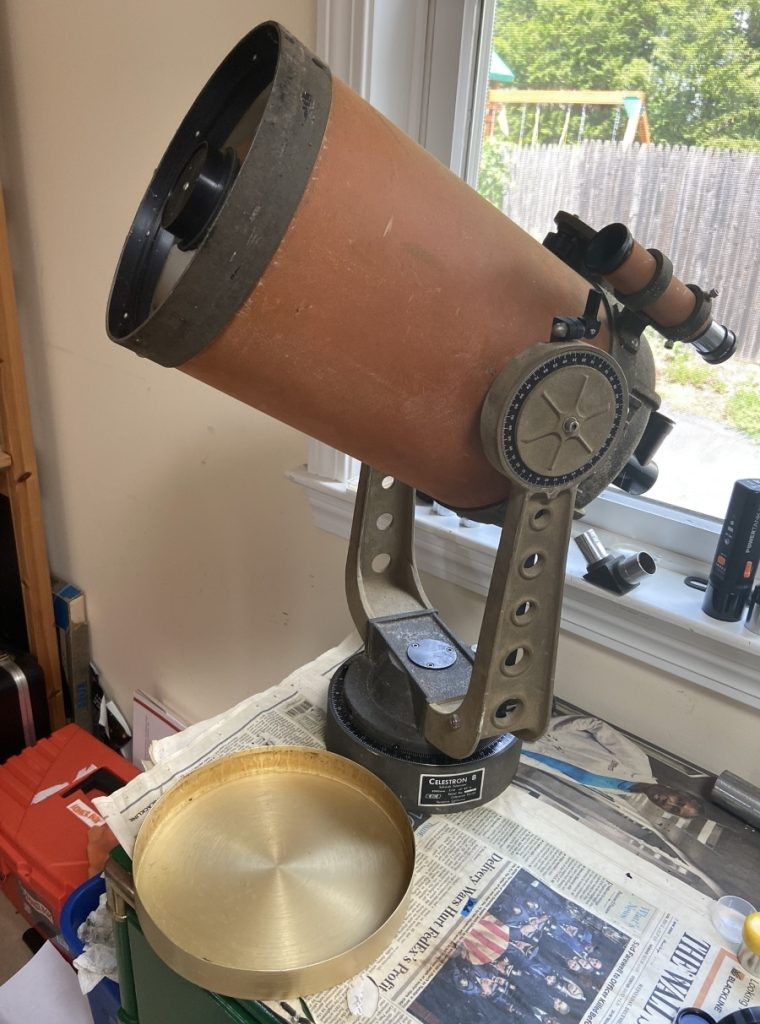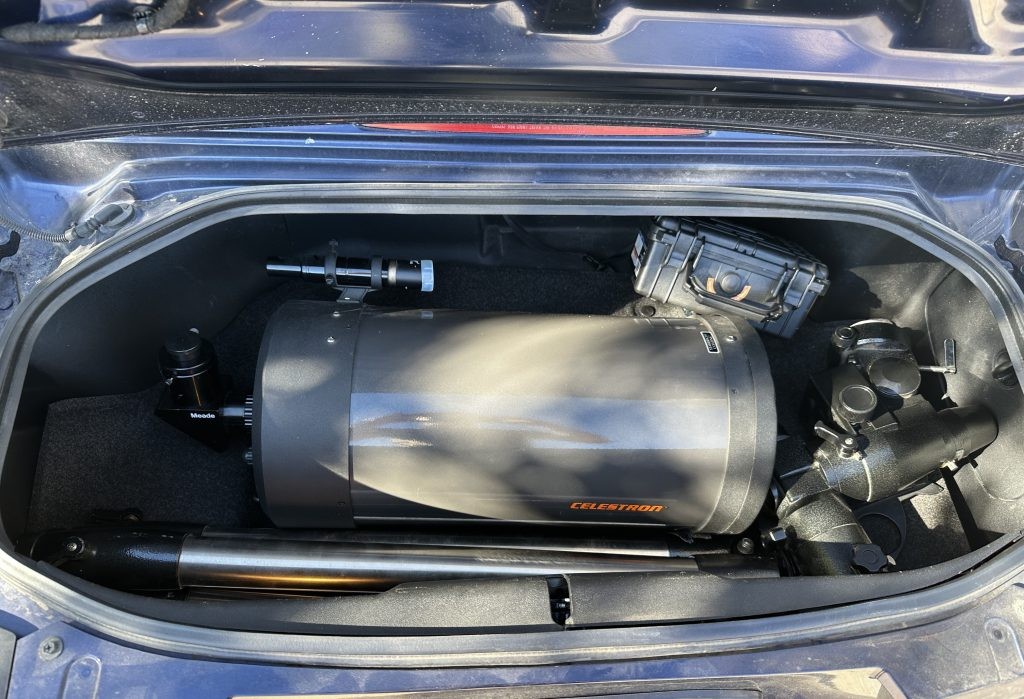I don’t know what to say about the future of the amateur telescope market, but it would not surprise me if Celestron/Synta continued to dominate it, or at least be a major force for another 50 years.
History of Celestron
Celestron was founded in 1964 by Tom Johnson, an electrical engineer. After a few years of experimenting with amateur telescope making, Johnson got the idea of forming a company selling compact, precision telescopes and ended up modifying the existing Schmidt-Cassegrain design into a more compact form factor and devised a “master block” method to produce Schmidt corrector plates en masse.
Celestron originally sold blue-and-white Schmidt-Cassegrains to universities and wealthy amateurs but entered the mass amateur market in the early 1970s with their original, orange-tube C8—a telescope that is still sold today, more or less the same as it was nearly fifty years ago.

The C5, C11, and C14, which are all still in manufacture today, followed, as did a “C90” Maksutov-Cassegrain (though the post-1990s ones share nothing in common with the original), along with their C9.25, which was introduced in the 1990s, and their newer C6, introduced in 2006.

Celestron has had numerous owners since its inception. Tom Johnson sold the company to a Swiss holding company, Diethelm & Co., in 1980. After some arguably poor management decisions led to Celestron being almost entirely eliminated (and nearly bought) by Meade Instruments, once their biggest competitor. Diethelm sold Celestron to the “department-store telescope” manufacturer Tasco in 1998.
There was a brief surge of prosperity at Celestron thanks to Tasco’s flashy marketing tactics, but it was for naught. Tasco itself went bankrupt in 2002, and Meade almost bought Celestron as a result. Thankfully, an FTC settlement prevented this from happening, resulting in a Meade monopoly on SCTs.
Afterward, Celestron briefly became employee-owned before being bought by the Chinese company Synta Technology Corp. in 2005.
Synta owns Sky-Watcher and manufactures generic goods for a variety of small brands and third parties who slap labels on their products. As a result, a lot of Celestron’s low-level, budget products are more or less variations on the stuff other manufacturers sell. At one point, Sky-Watcher and now-defunct Orion were even marketing rebranded Celestron Schmidt-Cassegrains.
Celestron Telescopes’ Quality
Today, Celestron primarily sells Schmidt-Cassegrain telescopes and GoTo equatorial mounts—arguably their best products—but also manufactures some decent entry-level telescopes, eyepieces, binoculars, and CCD cameras. Additionally, Celestron offers superfast f/2 Rowe-Ackermann Schmidt astrographs in 8”, 11”, and 14” apertures based off their original Schmidt Cameras and designed to use as much existing tooling and techniques as possible. That’s how Celestron telescopes came into being.
You could easily create an entire setup, be it for visual use, deep-sky astrophotography, or planetary astrophotography, entirely out of Celestron’s telescope products, though it may not be the most cost-effective or practical choice.
However, that’s not to say everything Celestron makes is good. Most of Celestron’s mounts, as I see it, are subpar.
Their Advanced VX, CGEM, and CGE mounts aren’t known for having great tracking or overall mechanical quality, and none of their computerized mounts interface with EQMod. This is bizarre considering their sister company, Sky-Watcher, makes high-quality mounts with EQMod capability and better guiding/tracking at similar prices, but I think it may be intentional in some way.
I’ve often noticed Celestron heavily relying on cashing in on its brand reputation, built up over decades, to sell many of its lower-quality products to unsuspecting and often uninformed buyers.
Celestron’s “PowerSeeker”, “AstroMaster”, “LCM”, and “ExploraScope” lines, among others, are awful, toy-like instruments that primarily seek to cash in on Celestron’s brand reputation and should be avoided like the plague. I’m unhappy that Celestron sells these instruments, but they would probably be unable to sell their higher-quality products at decent prices were it not for the profit made from these sales.
Customer Service
From my own experience, Celestron’s customer service has been fantastic. Even if you have one of their earliest manufactured instruments, Celestron will do its best to find spare parts. And if any post-1970 Celestron SCT you own has damaged or broken optics (or you’d simply like to upgrade to modern StarBright XLT ones), they will service it for you at a very reasonable price, sometimes even for free. This starkly contrasts with most other manufacturers I’ve encountered, who may not have any spare parts or support for no-longer-manufactured models or refuse to provide service to secondhand buyers.

